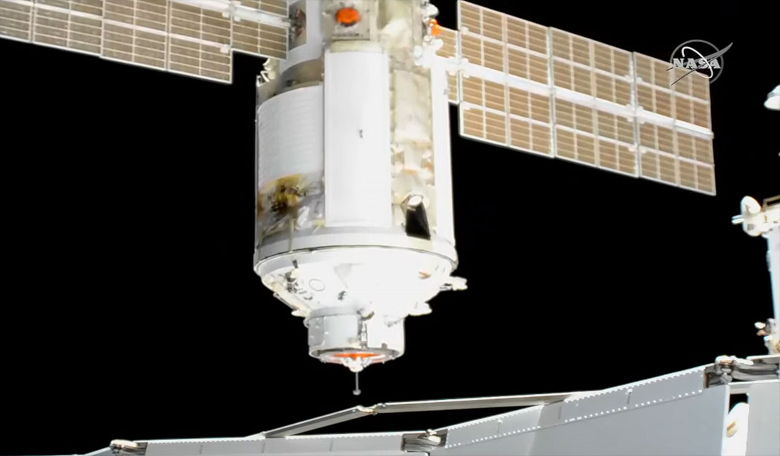NASA and Boeing have decided to stand down from today’s launch attempt of the US agency’s Orbital Flight Test-2 mission after Russia’s Nauka module ran into trouble soon after docking at the International Space Station (ISS) yesterday.
Launched 21 July, "Nauka" ("Science" in Russian) is Russia's primary new research module on the ISS
Russian cosmonauts Oleg Novitskiy and Pyotr Dubrov became aware of an issue with the new segment after performing leak checks between Nauka and the service module shortly after the module docked with the ISS Thursday morning.
At 12:45 pm the flight control team noticed the unplanned firing of Nauka’s thrusters, which caused the station to move 45 degrees out of attitude.
Ground teams quickly regained attitude control and the motion of the space station was reported as stable.
"The crew is not in any danger, never was in any danger and attitude control has been regained," NASA spokesperson Rob Navias said during a live broadcast on NASA TV after the space station regained its position.
The station appears no worse off after the incident and the crew on board haven’t “noticed any damage to the ISS ,” says space station programme manager Joel Montalbano.
To allow the space station team time to continue working checkouts of the Nauka module and confirm the station is ready, the mission, which would have been the second uncrewed flight test of Boeing’s CST-100 Starliner as part of the NASA’s Commercial Crew Programme, is now scheduled for no earlier than Tuesday at 1:20 pm EDT (17:20 GMT).
"Currently, launch teams are assessing the next available opportunity. The move allows the International Space Station team time to continue working checkouts of the newly arrived Roscosmos' Nauka module and to ensure the station will be ready for Starliner's arrival,” the US space agency said in statement yesterday.
Starliner is Boeing's crew spacecraft designed to shuttle astronauts to and from the space station.
If all goes as planned next week, Starliner will be lofted to a 181 kilometres (98-nautical miles) sub-orbital trajectory using the Atlas V rocket.
Following separation from the Atlas V, the Starliner engines will propel the spacecraft to its final orbit and on to the ISS.
The Atlas V configuration has been modified specifically for the Boeing Starliner spacecraft, and does not include a payload fairing. Instead, the Starliner’s own protective surfaces take the place of the fairing to protect the uncrewed spacecraft during ascent.
NASA and Boeing will be hoping for a successful mission as the craft's first attempted uncrewed test flight – OFT-1 – suffered “two critical software defects” that were not detected ahead of the flight, prevented the craft from rendezvousing with the space station in December 2019.
In addition to the two software issues, a poor communications link which impeded the Flight Control team’s ability to command and control the vehicle also contributed to the problems Starliner faced on the test flight.
Following the failed attempt, a joint Boeing-NASA investigation identified 80 recommendations that the aerospace giant, in collaboration with the US agency, had to address before attempting a second test flight. These have all now been addressed, Boeing say.
The launch, if it goes ahead on Tuesday, will be the 88th launch of the Atlas V rocket and the 100th launch from Space Launch Complex-41.











